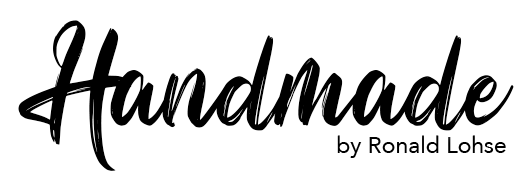Obviously, every table does not need to get the same finish. How you intend to use your table, where it will reside, how often the table will be used, and even your climate, all influence which finish should be selected.
Before I get into the different types of finish, I want to mention why we put a finish on the table to begin with. Aesthetically, a finish can enhance the grain and color of natural wood. Without a finish, wood will obviously have a natural matte appearance and texture. Unfinished wood is susceptible to scratches and splintering. We apply finish to create a barrier between the wood and it's smooth, beautiful state and the outside environment. The various finishing options allow us to either maintain a matte appearance or apply either a satin or gloss sheen.
A finish also preserves the wood against the effects of moisture, sunlight, and time. A wood table without finish is completely fine understanding that the wood will move, crack, and change color from brown to yellow and ultimately to gray. Most people don't want that in their fine furniture. Finish products allow for sealing the wood to prevent moisture absorption as well as to provide UV protection.
Given that most people prefer tables that hold their beauty for many years, here is a quick rundown of the various finish options.
Oils and Waxes
Oils and finishes that combine oils and wax are very common, durable, and beautiful. For many tables, this type of finish is desirable because it enhances the natural beauty of the wood, and is easy to maintain and repair.
Simple boiled linseed oil can be applied to wood and allowed to penetrate. This creates a waterproof barrier. However, this simple finish is probably not suitable for heavy use, and is not the most beautiful. Personally, I do like to apply linseed oil to the underside of tables because it has great protective qualities and is very low cost. Also, most people don't spend a lot of time looking at the bottom of their table.
There are several competing products which combine oils with a cured wax finish. These have all the benefits of a penetrating oil, and add the durability and sheen of wax. These products also preserve the natural feel and appearance of the wood. The majority of the tables I build are finished with this type of product. I prefer Rubio Monocoat. It is available in a "pure" color, or it can be colored to create darker or more colorful finishes.
Oil/wax finishes are suitable for most residential, indoor tables. Because it is wax, hot items should not be placed directly on the finish.
Polyurethane
Leveling up from oils and waxes, polyurethane offers a greater measure of barrier protection. This is a film finish that completely seals the wood, creating a durable, waterproof, heat and scratch resistant coating.
Poly is available in water- and oil-based versions. Water-based poly is fast drying and multiple coats can be applied in one day. Oil-based poly can take 2 or 3 days to dry between coats.
Polyurethane offers matte, satin, gloss, and high gloss finishes.
The durability of poly makes it a good choice for heavily used tables.
Repairing polyurethane is done by giving the surface a quick sanding to level out any defects then brushing or spraying a new layer.
Oil based polyurethane or spar urethane with UV protection are good choices for outdoor furniture that will be exposed to the Sun and weather.
Shellac
Shellac is a natural resin. It is derived from plants or insects. That may sound a little gross, but the end result is stunning.
Shellac can be purchased in liquid form or as "flakes" that are dissolved in alcohol then rubbed into the wood. As the shellac is built up and rubbed, the level of sheen can be controlled.
Shellac is suitable for indoor tables, but it is not heat resistant and care must be taken to avoid placing anything hot directly on the finish.
Lacquer
Lacquer is a quick drying resin that produces a hard, durable surface. Like polyurethane, lacquer is available in water-based and solvent-based formulas. Water-based lacquer is less toxic and easier to clean up than solvent-based lacquer, but the finish is not as durable.
Lacquer is heat resistant, making it a good option for use on dining tables.
A lacquer finish can give wood a beautiful, deep shine. It is also one of the most durable finishes available, making it a good choice for high-traffic areas such as dining tables.

